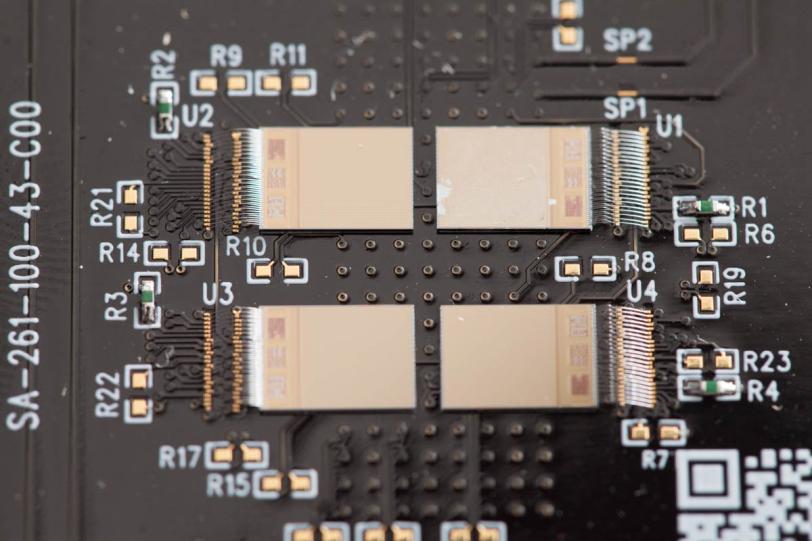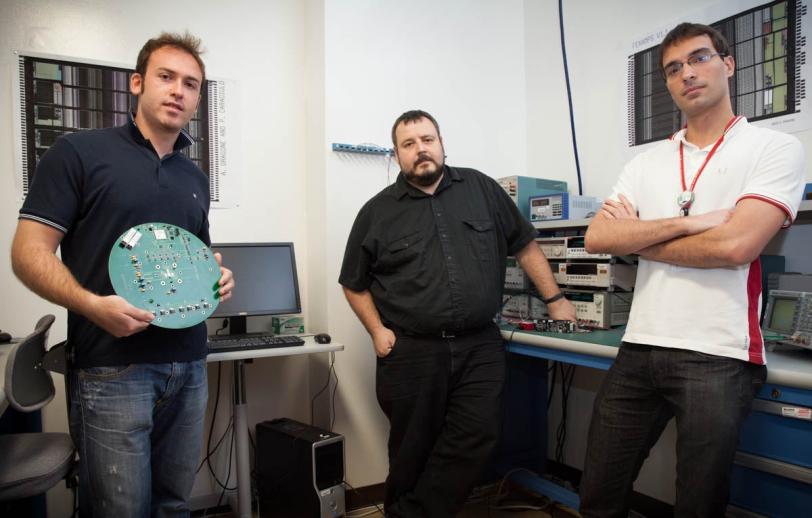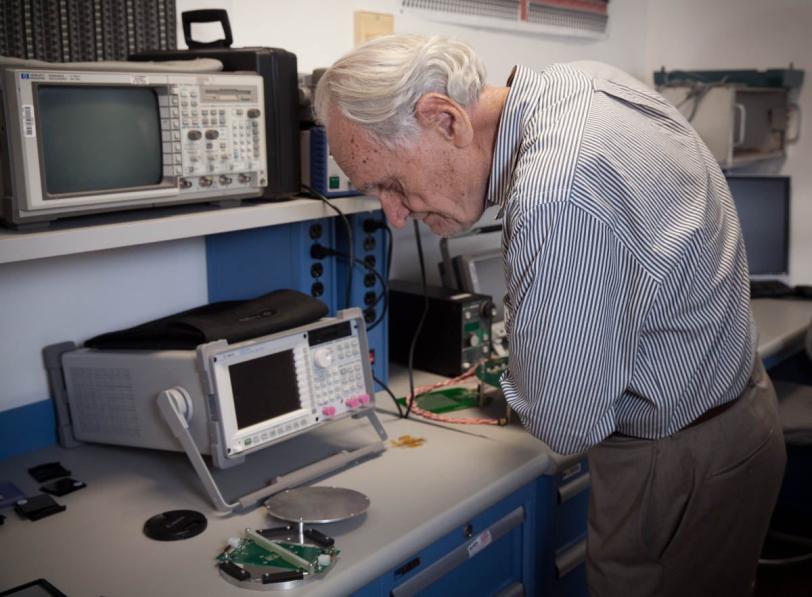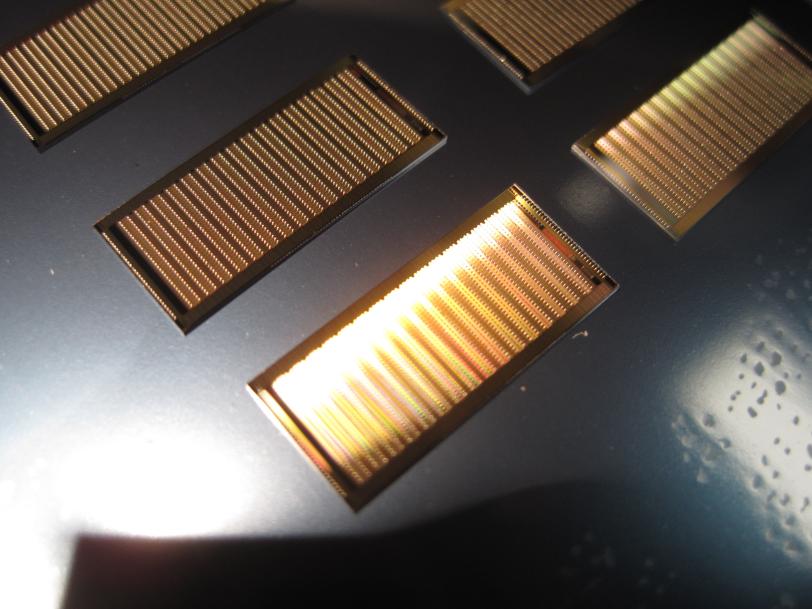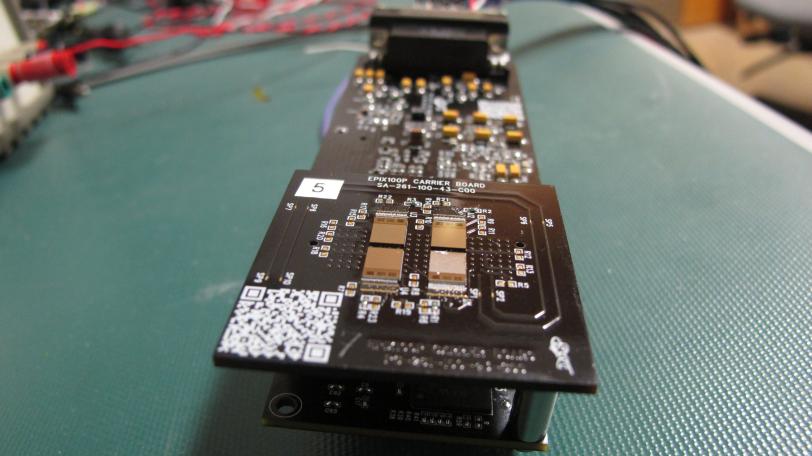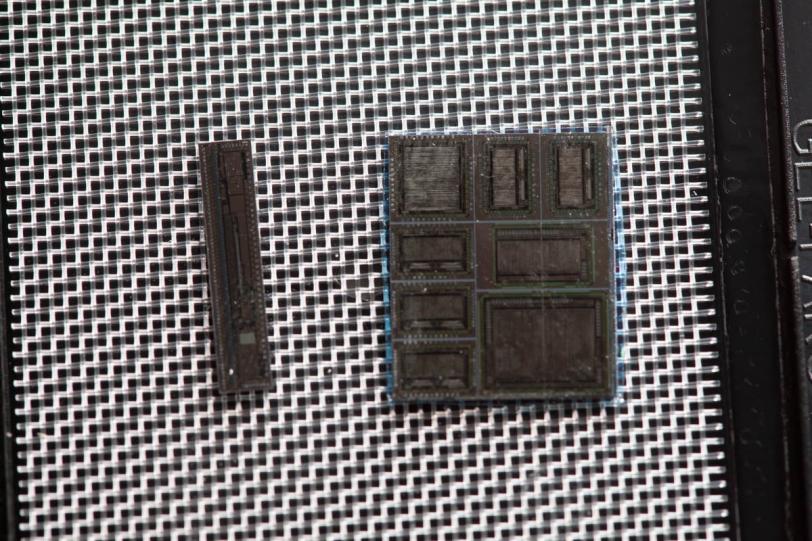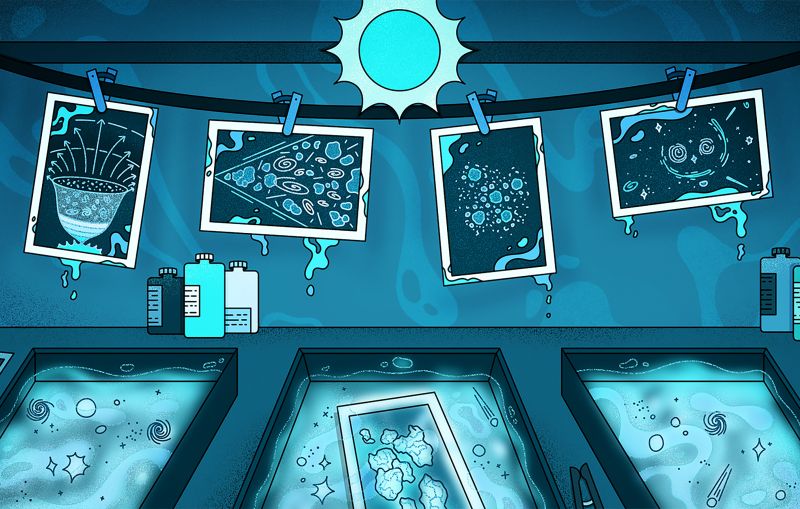Completing the Circuit: SLAC-designed Chips Empower X-ray Science
Scientists in SLAC's Integrated Circuits Department reach a new frontier in ultrafast X-ray science with intricately designed signal-processing chips that translate particles of light into bits of data.
By Glenn Roberts
It may sound like chasing rainbows: Detecting flashes of light and energy that are invisible to the human eye and last only for a trillionth of an eye-blink. These flashes, in the form of X-rays, gamma rays and other wavelengths, hold clues to the nature of exotic subatomic particles, important biological proteins and massive space objects alike.
To reveal new details about science at these extremes, a small team of scientists in SLAC's Integrated Circuits Department is designing intricate signal-processing chips known as application-specific integrated circuits, or ASICs. The chips translate signals picked up by sensors into bits of data for analysis. ASICs and sensors are at the core of complex detector systems in development at SLAC.
Much of the group's latest work is focused on building custom chips for new X-ray detectors at the Linac Coherent Light Source, a unique laser that fires X-ray pulses at a rate of up to 120 pulses a second.
Unlike the multifunction chips at the core of desktop computers, SLAC's ASICs are designed for specific roles, such as counting light particles at a rapid rate. The circuits must be reliable and withstand prolonged exposure to extreme environments, such as intense X-ray light.
Some of the group's latest circuits are sensitive enough to capture information from one particle of light, or photon, and powerful enough to simultaneously process signals from hundreds or thousands of photons.
The chips are coupled directly to sensors, with hundreds to thousands of channels that correspond to locations on the detector array. Together they function as an ultrafast, high-resolution camera.
"We need to push forward and increase the speed of these detectors while keeping the remarkable resolution and sensitivity of the present designs," said Angelo Dragone, who leads the Integrated Circuits Department in SLAC's Research Electronics and Software Division.
The work builds on SLAC's decades-long tradition of building specialized electronics and detectors to capture results from particle physics experiments, from bubble-chamber experiments to BaBar.
In early particle physics experiments at SLAC, massive racks of electronics were used to read out data from detectors, recalled Dietrich Freytag, a member of the ASICs team who came to SLAC as an electronics specialist in 1974.
"At that time there were no ASICS at all. We used off-the-shelf equipment," he said, and electronics racks were "plastered with circuitry" connected by large cables. ASICs have greatly miniaturized detector electronics, allowing imaging resolution and sensitivities not reachable with more conventional circuits.
The unprecedented capabilities of machines such as LCLS have increased the demand for advanced detectors that are not commercially available, Dragone said, making it even more important to do this specialized work in-house.
Just as tech giants in Silicon Valley continually raise the bar in computing by finding ways to pack more components and computing power into microprocessors, the ASIC development team works to squeeze more transistors onto the chips they design to increase sensitivity to fainter signals.
One of the latest designs, called ePix100, packs about 28 million transistors onto a single integrated circuit, which is comparable to the number of transistors on commercial microprocessors for desktop computers.
Because the ASICs couple directly to sensors, it is important to make them as large as possible without compromising their reliability, Dragone said. Some of the latest ASICs measure 2 by 2 centimeters – far larger than industry standards, and at the limit of available technologies. This approach requires particular care in the design, but serves to minimize gaps on the detectors, and fewer gaps mean higher-quality data.
In addition to its work on chips for LCLS detectors, the team designed chips for the Fermi Gamma-ray Space Telescope, which has 16,000 ASICs of nine different designs on board. Now, the group is building chips for SLAC's Stanford Synchrotron Radiation Lightsource; the CERN particle physics lab in Europe; nEXO, the next phase of the Enriched Xenon Observatory experiment; and the planned International Linear Collider project.
The timeline for developing a new ASIC, including design, fabrication by industry and testing, is about a year, Dragone said, depending on the chip’s complexity. Designing an optimal architecture for science experiments is always a tradeoff between performance, development time, cost and the choice of the most appropriate technology, Dragone said. The ASICs team typically develops families of chip designs around a common architecture so the circuits can use similar data-acquisition and electronics systems. "The designs are modular and scalable," he said, "and this approach reduces development time and cost."
SLAC's rich experience in particle physics work has been helpful in designing new ASICs for X-ray science, Dragone said: "We can piggyback on expertise in particle physics and astrophysics to do detectors for LCLS."
Already, the group is working on more advanced integrated circuits for next-generation X-ray detectors ePix100 and its sibling, ePix10k.
Contact
For questions or comments, contact the SLAC Office of Communications at communications@slac.stanford.edu.
